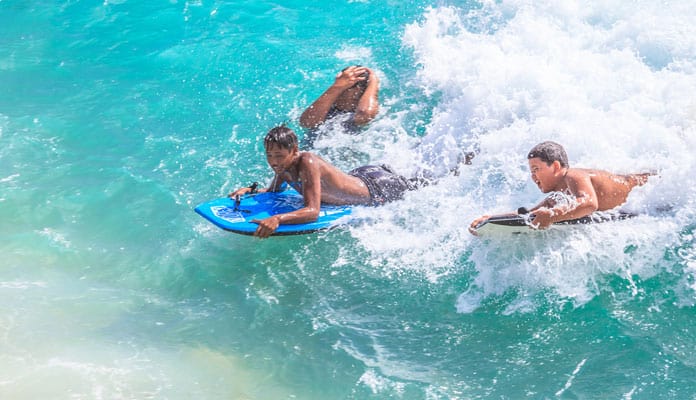
Bodyboarding is fun for all ages and skill levels, making it a great summertime water activity! Bodyboarding is similar to surfing as you have a board in the water that you ride on, but there are some subtle differences which make this a more accessible water sport for those who are not confident enough to surf, or for people who want a different experience in the water. Bodyboarding can take you through the water in an entirely different way, and you have less chance of falling off the board as you are laying down and gripping the board instead of standing up and balancing.
The best bodyboards are made from high-quality materials that allow you to propel through the waters with ease. A good board will get you into the water quickly without a lot of training and allow you to maneuver through the waves without running into a lot of trouble. Bodyboarding is a relatively simple activity, but as with any water sport, there are a lot of things to think about when it comes time to purchase your equipment. We have scoured the outer reaches of the oceans to bring you everything you need to know about bodyboards and bodyboarding.
Check out our best bodyboard reviews below to find our list of the best boogie boards on the market in 2023.
OUR TOP PICK
Own the Wave Super Lightweight
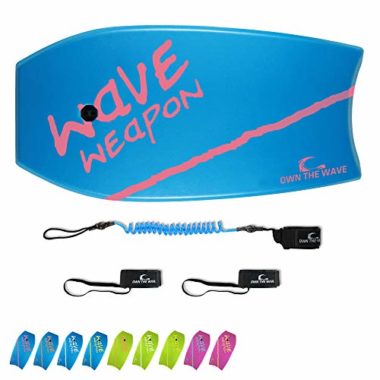
- Stand Out Features - Why We Love It
- Lightweight
- Rigid foam core
- Crescent-shaped tail
- Durable
- 9 color combos available
- 1-year satisfaction guarantee
- Includes bag and leash
Weight Limit: 150lb
Dimensions: 43” x 24” x 2.75”
Skill Level: Beginner-Advanced Riders
EDITORS CHOICE
GYN Trade Heat Sealed Legendary
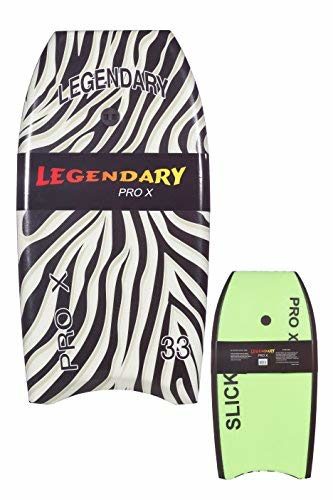
- Stand Out Features - Why We Love It
- Compact and lightweight
- High-quality features
- Tough EPS foam core
- Supreme durability and strength
- Great for warm and cold water
- Slick bottom
- Easy to maneuver
Weight Limit: 150lb
Dimensions: 42” x 19” x 1.5”
Skill Level: Intermediate-Advanced Riders
BEST VALUE
Bo-Toys Lightweight
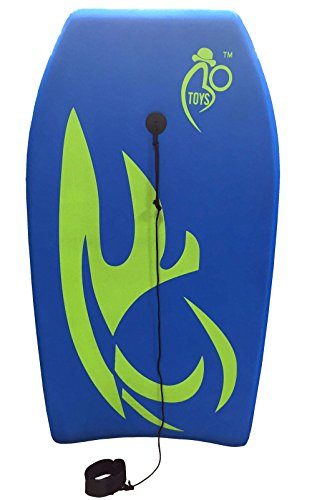
- Stand Out Features - Why We Love It
- High-Density Polyethylene
- EPS core with Heat lamination Technology
- 60/40 rails
- Water resistant
- Stylish
- 100% satisfaction guarantee
Length: 33’’ or 41’’
Skill Level: Beginner/intermediate
BPS Storm
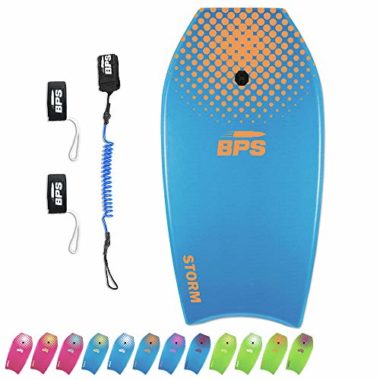
- Stand Out Features - Why We Love It
- Lightweight
- High speed
- Slick bottom surface
- Crescent tail
- EPS core
- 12 color options
Weight Limit: 188lb
Dimensions: 41”
Lucky Bums EPS Core
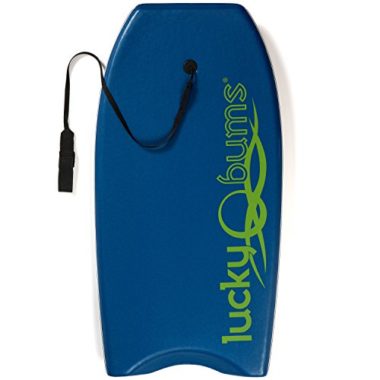
- Stand Out Features - Why We Love It
- 60/40 rail system
- Ultimate control
- Lifetime manufacturer’s warranty
- Leash included
- Multiple Sizes
- 4 color choices
Weight Limit: 190lb
Dimensions: 41” x 22” x 0.65”
Skill Level: Beginner-Advanced Riders
Morey Mach 7
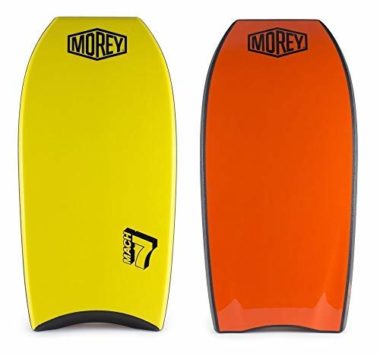
- Stand Out Features - Why We Love It
- Stringer
- Large frame
- Designed to ride hard
- 2 color choices
- Crescent tail
Weight Limit: 185lb
Dimensions: 44” x 21” x 2.5”
Skill Level: Intermediate-Advanced Riders
Boggie Board Fiber
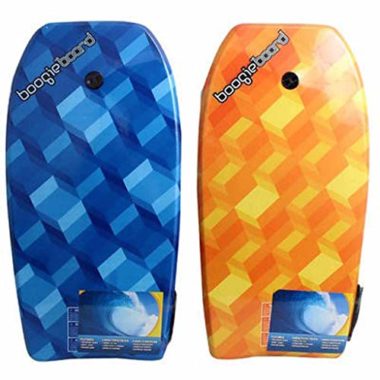
- Stand Out Features - Why We Love It
- Fiber clad body
- Ideal for small riders
- Phuzion Core high-density polystyrene core
- 2 color choices
- Wrist leash included
Dimensions: 33’’
Skill Level: Beginner
Thurso Surf Lightning 42″
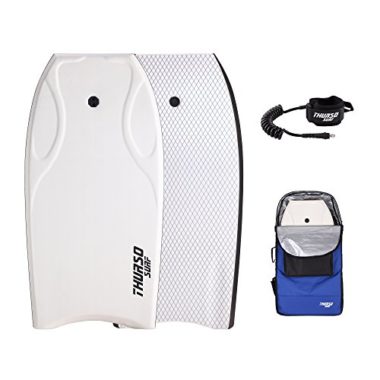
- Stand Out Features - Why We Love It
- Stringer
- Large frame
- Designed to ride hard
- 2 color choices
- Crescent tail
Weight Limit: 185lb
Dimensions: 44” x 21” x 2.5”
Skill Level: Intermediate-Advanced Riders
Wave Rebel Malaga
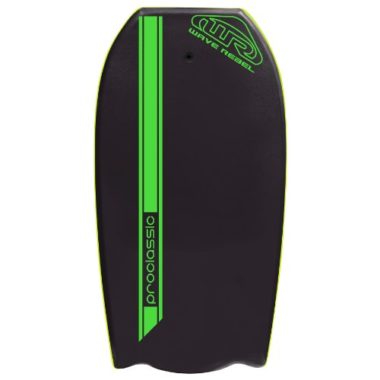
- Stand Out Features - Why We Love It
- EPS core
- XEPE deck
- Pro-Slick bottom
- Double swivel straight urethane leash
Weight Limit: 180lb
Dimensions: 42’’ x 21.25″
Skill Level: Beginner – Intermediate Riders
Empire Makai
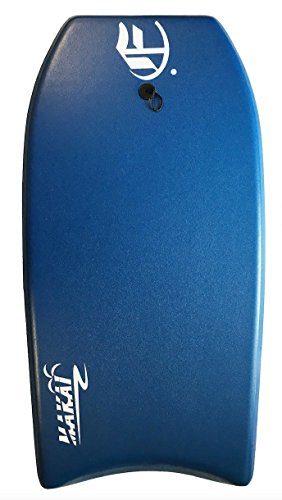
- Stand Out Features - Why We Love It
- Excellent durability
- Leash included
- Lightweight design
- Great for beginners
Weight Limit: 160lb
Dimensions: 39” x 21” x 2.7”
Skill Level: Intermediate Riders
How To Choose The Best Bodyboard – Buying Guide
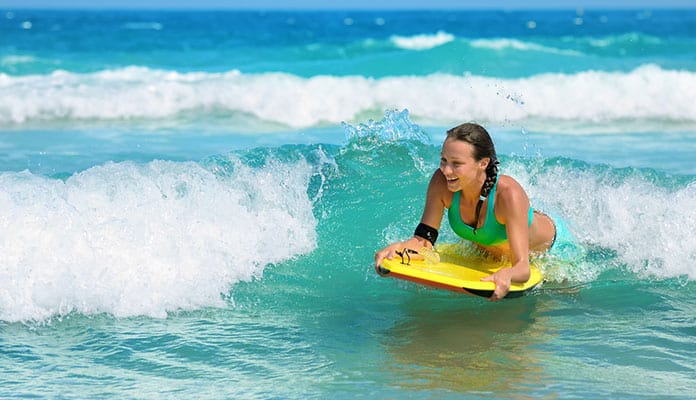
Just like best surfboards and skimboards, bodyboards are a combination of features.
Size
Bodyboards have a specific shape that makes them able to ride waves. If the board is too small, you will be too low in the water, and your arms and legs will be dangling. When the board is too big, control can be an issue. The more waves you ride, the more you will have an understanding of the best bodyboard size for you. You want the board to fit comfortably under your arm so that you can carry around on the beach with you. It should be comfortable enough for you to run out into the water with. You should be able to get your hand under the lower rail of the board. A good indicator that you have the correct size of the board is when your arm is almost hanging straight at your side when you are carrying it.
For easy sizing, you can measure from the ground to your belly button. This is the length of the board you should be looking for. This is for general sizing, but that does not mean that you are going to get the perfect size of bodyboard by measuring in this way. Look for the weight capacity of the bodyboard and base your measurements on that too.
Wave size
For smaller waves, a larger bodyboard is best. A bigger boogie board will give you more stability in the water, and the length will mean that you can ride over these small waves without losing control of the bodyboard as you will not be thrown around. Larger waves will require you to get a smaller bodyboard. Instead of stability, you will need control and turning ability. A large bodyboard will be thrown around too much by a big wave, so you need the control and agility of a small bodyboard.
If you are a beginner, then we would recommend starting on small waves with a large board to get used to maneuvering a board through the water. Once you have mastered the basics, then you can move onto a smaller board which requires more of your control and core strength.
Prone Vs. Dropknee
Once you have your bodyboard sized, you should think about how you are going to ride your board. There are two main ways in which you can ride your bodyboard: prone and drop-knee. When you ride prone, you ride on your stomach. With a drop-knee position, you ride with one knee on the bodyboard, the foot connected to the knee on the tail of the board, and your other foot flat on the nose of the bodyboard.
If you are only just starting out with bodyboarding, then we recommend that you start out riding prone and find a board which is suited to prone riding. It is easier to ride prone, and you will find it easier to navigate the waves. Once you feel more confident in the water, you can continue to rode prone or you can switch to drop-knee.
Dropknee is not a common position, but there are a few bodyboarders who ride in this position. It gives a compromise between surfing and bodyboarding. This position makes it harder to control the bodyboard, but when you do master it, you can maneuver through the water better than you are able to in a prone position. There are boards which are suited to this style of bodyboarding, but we would recommend not starting with this position.
Construction
The materials used to make these boards will determine, not only how long they will last, but also how they will handle in the water. The most common material used in modern bodyboard design is polypropylene foam. It is stronger and lighter than polyethylene foam, which has been used for many years. Polypropylene will cost more as it is the newest tech, but it is worth it in the long run. Some companies are using a combination of these two to make a less expensive, but still responsive board.
We would recommend buying a board made completely from polypropylene foam as it will be stronger and lighter. If you are serious about bodyboarding, then the investment is worth it for the length of time the board will last you.
You might also like: Bodyboarding vs Surfing: Comparison
Stringer
This is a piece of material that creates added flex and stiffness to the best bodyboard. It flows along the entire length of the bodyboard and makes it more durable. It is usually found on larger boards to keep the integrity and strength high. Look for stringers which come as one single piece. Stringers should also be crafted from durable materials which can hold up to impacts and abrasion as this part of your board is going to take the brunt of the damage.
Tail
The shape of the tail can influence how the bodyboard moves through the water. A crescent is the most common shape and will give you a more comfortable and controlled ride. It hugs your body and adds stability in rough water.
If the tail is wider, then it will be more stable. The traditional crescent shape has been around for so long because it is tried and tested. Looking for more speed? A smaller tail will propel you through the water faster.
Rocker
The rocker of your bodyboard refers to his curved it is on the bottom. The more rocker your board has, the more of a curve it has from the nose to the tail. More rocker means more maneuverability but less speed. Less rocker gives you the opposite. The choice will depend on whether you value speed over maneuverability or whether you want to meet somewhere in the middle.
FAQs
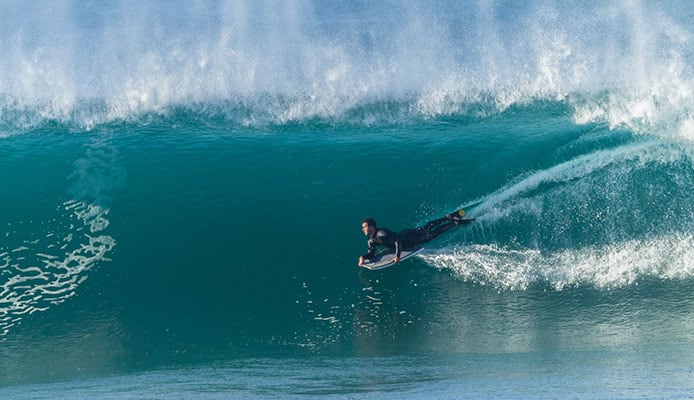
Globo Surf Overview
Bodyboarding is a growing sport. If you go down to your local beach, you can probably find at least one person out in the water with a boogie board. The only thing missing from that picture is you. It is time for you to grab the best bodyboard and get out there with them.
The great thing about bodyboarding is that the sport really is open to anyone. Surfing is amazing, but it can take a lot of hard work and dedication to get really good at it. With bodyboarding, you can get out in the water almost as soon as you have a board and get boarding at a decent level without having to put in a lot of time.
We love that kids can get out into the water with a bodyboard. Not only that, but it is a fun and exciting way for adults to enjoy the water and get some exercise. When you break it down, bodyboarding is a simple water sport. You should now have all the information you need to make an informed choice about a bodyboard you need.
All that is left to do it to get out there in the water and start your adventure.

